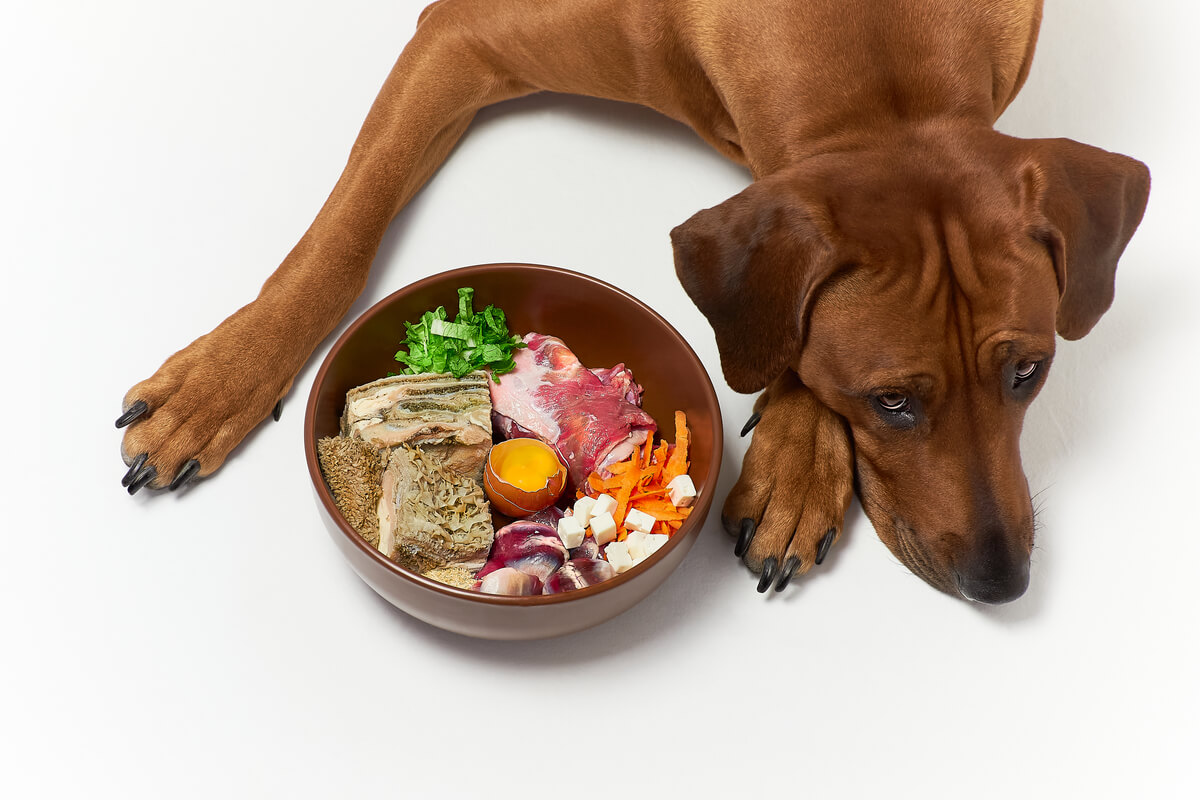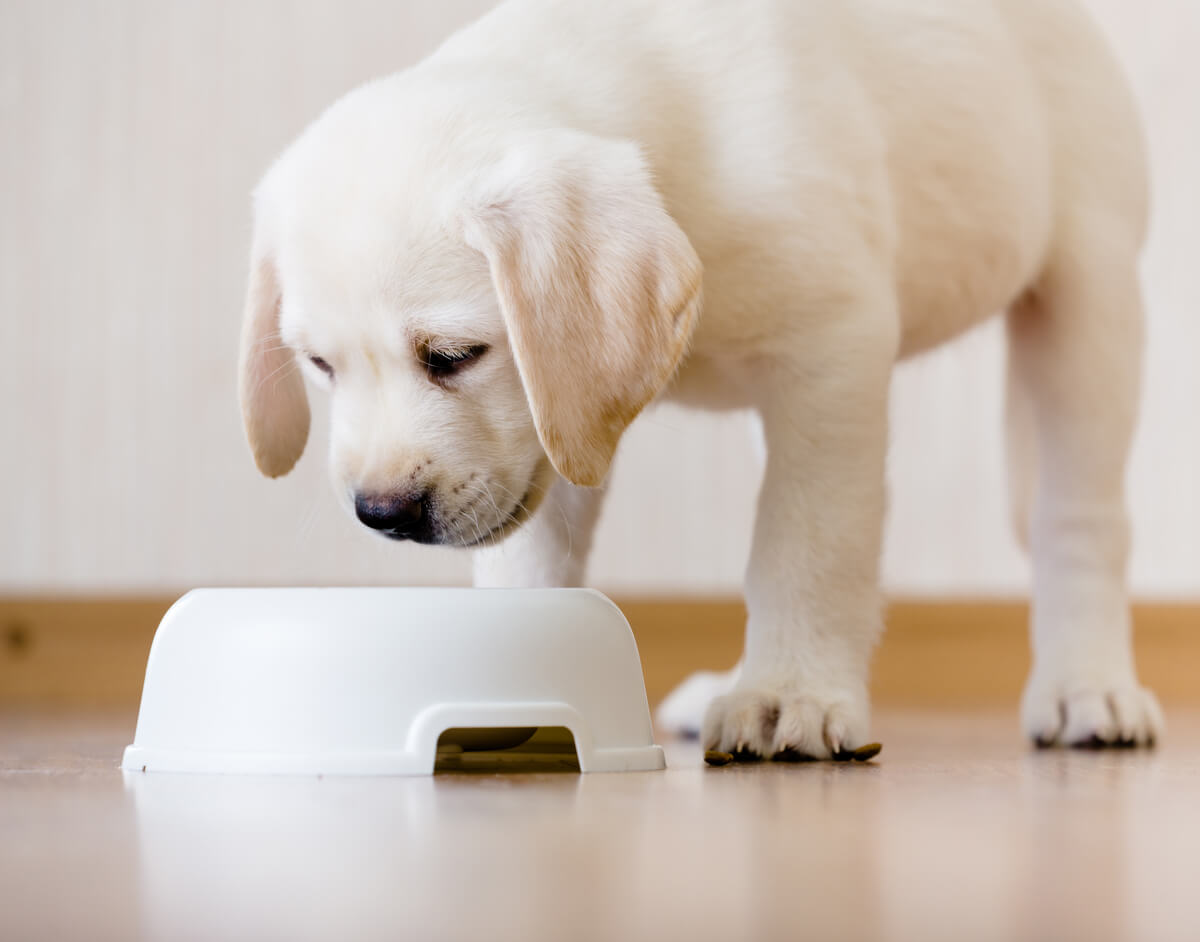How Long Does it Take for a Dog to Digest its Food?
How long it takes for a dog to digest its food can be a relevant factor to avoid accidents. However, it's a more complex matter than it seems.

If you are interested in delving into aspects of your dog’s health beyond the basic daily care you give it, you may have wondered how long it takes a dog to digest its food. This information may be relevant when the animal is exercising or going into the water, for example.
Knowing how your canine friend’s body works is going one step further than basic care and helps you to detect possible problems. Here we’ll tell you clearly everything you need to know about the digestive process in dogs. Don’t miss it.
Phases of digestion in dogs
Dogs, even though they’re omnivorous animals, have digestive systems that are much more prepared to process animal protein than vegetable matter. Therefore, their digestion is different from that of humans, although the stages are the same. In the following sections, you can read about each phase in detail.
Chewing and swallowing
Dogs, unlike us, don’t begin their digestion with saliva, as their’s doesn’t contain the alpha-amylase enzyme that begins to break down the starch molecules in the mouth. In dogs, this liquid fulfills an exclusively lubricative function, as they chew for quite a short time.
When the dog swallows, the food bolus passes through the esophagus, which contracts to facilitate passage through the digestive tract. At the end of this, food passes through the cardias or gastroesophageal sphincter, the valve that separates the esophagus from the stomach.

Stomach processing and passing to the small intestine
As we said above, dogs are very adaptable and, if they lived in freedom, they would have opportunistic habits. For this reason, their stomach has to be able to digest anything that they find, from bones to fruit to decaying meat. A dog’s stomach is a much more acidic environment than that of a person precisely because of this need.
The pH of the canine stomach is 1 to 2, much more acidic than a lemon, which has a value of 2.3.
Once treated, ingested food is transformed into a substance called chyme. Fats and proteins, which have gone through a breakdown phase in the stomach, are ready to be absorbed into the small intestine. In the latter, 3 main parts are distinguished:
- Duodenum: Here the chyme is treated with enzymes and hormones from the liver and pancreas to reduce its acidity.
- Jejunum: This is responsible for the separation and absorption of nutrients. 50% of the water in the food is reabsorbed in this area.
- Ileum: Its function focuses on the second phase of absorption and is the gateway to the large intestine. It also contains an immune function, with which it rules out possible toxins that can pass to the colon or the bloodstream.
Large intestine and waste disposal
Once the ileum has passed and the nutrients are fully absorbed, the remaining content reaches the large intestine through the ileocecal valve. Here the bacterial fermentation of the fiber and the absorption of electrolytes and water takes place.
Stools are compacted throughout this intestine thanks to the absorption of water. The color and shape of the waste will depend on the food the dog has eaten, as well as the condition of the bacterial flora. Finally, the stools are excreted through the anus.
Duration of digestion in the dog
“How long does this whole process take?” Generally speaking, it takes 5-10 hours for food to leave the dog’s stomach. In the small intestine, it takes 1.5 to 4 hours, while in the large intestine it can take between 7 and 42 hours.
Are you surprised by the great difference between the two intestines? This is because there isn’t an estimated digestive time for all dogs; rather, there are different factors that determine it. These are the following:
- Age: As the dog ages, its digestion slows down, especially when it comes to intestinal transit.
- Size: A Chihuahua and a Great Dane carry out the same digestive process, but in the Great Dane the food travels a greater distance, so it takes longer for these dogs to digest food.
- Hydration: Water is essential for digestion and for the formation of stools. If the dog isn’t sufficiently hydrated, these will be harder and the dog could become constipated, delaying defecation.
- Daily activity: The motility of the intestine is greatly improved with physical activity, especially when running and walking. Dogs with a sedentary life can have digestive problems and constipation.
- Type and amount of food: Wet foods, such as tinned food and pâtés, aren’t as nutritious as dry food, but they contain more water. Therefore, they promote digestion and accelerate it.
Rest time before the walk
Knowing how long it takes your dog to digest food is very useful if you want to take them out for a walk or a run. Ideally, physical activity should be carried out before eating, since doing it while the food is still in the stomach puts them at risk of gastric torsion.
Gastric torsion is a condition in which the dog’s stomach twists around or rotates its position due to the accumulation of food, liquid and gas. This is a veterinary emergency that requires immediate attention. Otherwise, it can cause the dog’s death.
Baths after eating
You may also wonder if the rule of waiting a few hours before bathing is true in dogs. The real problem in this situation isn’t due to digestion (as is often thought), but what is known as peripheral shock due to vascular difficulties or distributive shock.
In this shock there’s a sudden drop in blood pressure due to the difference in temperature between the cold water and the digestive organs, which receive a greater blood supply to function and are warmer. This drop in tension can render the animal unconscious and cause it to drown if it’s underwater.

Knowing about the digestive cycle of your dog, and how long it takes for your dog to digest its food, is as important as any other aspect of its care, as you’ll have seen. Good nutrition and hydration, as well as controlling the times of meals and exercise, can avoid serious problems that put your dog’s life at risk, so don’t hesitate to always do your best for it.
